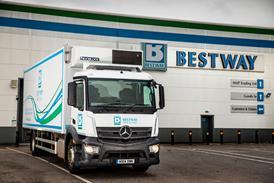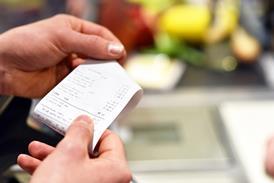Most shoppers fear crooks are watching them type in their PIN at tills, according to new research by Harris Interactive.
A survey of 1,600 people found that although the majority welcomed the introduction of chip and PIN, 63% said they were conscious of people watching them enter their PIN while they paid for goods.
This figure rose to 69% among females and to 87% among those who said they had not welcomed the introduction of chip and PIN.
The findings have led to calls for retailers to make customers feel safer when using chip and PIN.
Since 14 February most shoppers using credit and debit cards have had to pay for goods using their PIN rather than a signature. This is because banks will no longer foot the bill for fraud committed where a transaction has been signed for.
"Retailers need to ensure that customers feel secure and protected while purchasing goods in their stores," said Frances Green, director of financial research at Harris Interactive. "The introduction
of chip and PIN should be seen as an opportunity to communicate with consumers rather than a barrier to trade."
The Chip and PIN Programme advises retailers to train staff in PIN transactions. Staff should turn away when a customer enters their PIN, and tell shoppers they should hide their PIN better and use a hand or their body to shield their entry. CCTV cameras should be pointed away from terminals.
In spite of some misgivings, more than half of those quizzed - 55% - viewed chip and PIN positively, while 65% felt comfortable typing in their number.
Some 47% said using chip and PIN was quicker than signing while 46% said it was more secure.
Chip and PIN helped cut card fraud by 5% to £209.3m in the six months to June 2006, according to UK payments association APACS. Card fraud in UK retail was down 43% to £42.1m.
A survey of 1,600 people found that although the majority welcomed the introduction of chip and PIN, 63% said they were conscious of people watching them enter their PIN while they paid for goods.
This figure rose to 69% among females and to 87% among those who said they had not welcomed the introduction of chip and PIN.
The findings have led to calls for retailers to make customers feel safer when using chip and PIN.
Since 14 February most shoppers using credit and debit cards have had to pay for goods using their PIN rather than a signature. This is because banks will no longer foot the bill for fraud committed where a transaction has been signed for.
"Retailers need to ensure that customers feel secure and protected while purchasing goods in their stores," said Frances Green, director of financial research at Harris Interactive. "The introduction
of chip and PIN should be seen as an opportunity to communicate with consumers rather than a barrier to trade."
The Chip and PIN Programme advises retailers to train staff in PIN transactions. Staff should turn away when a customer enters their PIN, and tell shoppers they should hide their PIN better and use a hand or their body to shield their entry. CCTV cameras should be pointed away from terminals.
In spite of some misgivings, more than half of those quizzed - 55% - viewed chip and PIN positively, while 65% felt comfortable typing in their number.
Some 47% said using chip and PIN was quicker than signing while 46% said it was more secure.
Chip and PIN helped cut card fraud by 5% to £209.3m in the six months to June 2006, according to UK payments association APACS. Card fraud in UK retail was down 43% to £42.1m.
















No comments yet